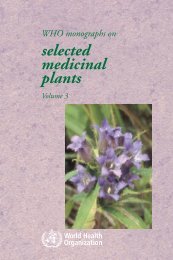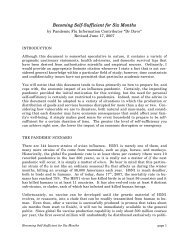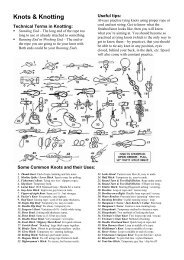You also want an ePaper? Increase the reach of your titles
YUMPU automatically turns print PDFs into web optimized ePapers that Google loves.
COMMON EDIBLE MUSHROOMS<br />
GENUS Collybia<br />
The name Collybia, derived from a Greek word meaning a small<br />
coin, probably refers to the regular, disc-shaped cap of some of the<br />
species. The genus may be distinguished by (i) white spores, (2)<br />
gills that vary from being almost free to being attached to the stem<br />
but do not descend the stem at all, (3) the rather tough stem, and<br />
(4) the inrolled margin of the cap of young specimens. Of the<br />
comparatively large number of species only four will be described.<br />
Many of the species are difficult to identify, and few are especially<br />
good to eat.<br />
<strong>Edible</strong>: COLLYBIA CONFLUENS<br />
The species name means growing together and is descriptive of<br />
the habits of the plant (Figure 18). A regular inhabitant of the<br />
northern forests, this species has usurped the so-called reviving<br />
habit of the genus Marasmius; that is, in dry weather the fruit<br />
bodies wilt and shrivel but do not collapse, and with the advent of<br />
rain they again expand, as is shown in the before-and-after study<br />
on the following page.<br />
The whole plant is pale brown when moist and light tan when<br />
dry, the gills being almost the same color as the cap. The stems,<br />
covered with a frosty bloom of hair, are very tough and fibrous<br />
and in older specimens are hollow. Unfortunately the flesh tends<br />
to retain this toughness when cooked. The caps average only<br />
about i inch in diameter, although many are smaller, and the stems<br />
are 3 or 4 inches long. However, this diminutive mushroom can be<br />
collected in quantities since it grows in clumps that are often scattered<br />
rather thickly over the forest floor.<br />
<strong>Edible</strong>: COLLYBIA PLATYPHYLLA (Broad-giiied Collybia)<br />
The unusually wide gills of this fungus, the thick, tough, twisted<br />
white stem, combined with its habit of growing on wood, set it<br />
apart from most other species (Figure 20 and Plate 2C). It is a<br />
44
















